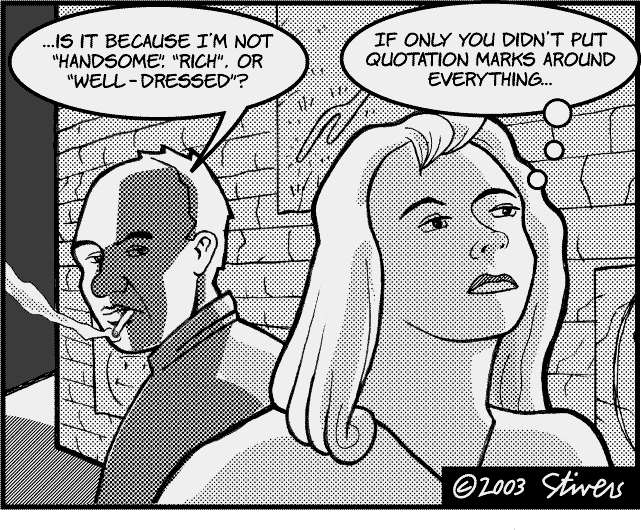
I've always been terribly confused with how punctuation works when it's around quotation marks. Do they go on the inside, or outside and how on Earth can you always know? I did a search for it and found this on some quotation marks page:
Inside or outside
Punctuation marks are placed inside the quote marks only if the sense of the punctuation is part of the quotation (this system is referred to as logical quotation).
Correct: Arthur said that the situation is “deplorable”.
(When a sentence fragment is quoted, the period is outside.)
Correct: Arthur said, “The situation is deplorable.”
(The period is part of the quoted text.)
Incorrect: Martha asked, “Are you coming”?
(When quoting a question, the question mark is inside because the quoted text itself was a question.)
Correct: Did Martha say, “Come with me”?
(The very quote is being questioned, so here, the question mark is correctly outside; the period is omitted.)
From the quotation marks wiki page we find this:
In both styles, question marks and exclamation marks are placed inside or outside quoted material on the basis of logic, but colons and semicolons are always placed outside[2]:
Did he say, “Good morning, Dave”?
No, he said, “Where are you, Dave?”
In the first two sentences above, only one punctuation mark is used at the end of each. Regardless of its placement, only one end mark (?, !, or .) can end a sentence in American English.
So it's fairly simple: if what you're quoting has punctuation, put it within, but if it doesn't, put it on the outside.
No comments:
Post a Comment